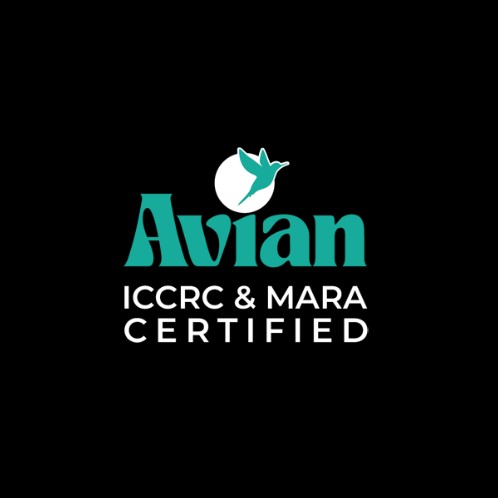
When people think about building a future in Europe, countries like Germany, France, or the UK often take the spotlight. But in recent years, Poland has quietly become one of the strongest destinations for professionals and workers looking to start a new life in Europe. With a growing economy, affordable cost of living, and access to the entire Schengen zone, Poland offers opportunities that are both practical and life-changing.
If you’ve been thinking about working in Europe, Poland might just be your gateway. The only hurdle most people worry about is the work permit process. The good news? Getting a Poland work permit doesn’t have to be overwhelming. With the right information and guidance, you can navigate the system smoothly and open the door to your European journey.
Let’s break down everything you need to know about the Poland work permit, what it is, how to apply, the requirements, and why Poland should be at the top of your list.
Why Choose Poland?
Before we dive into the process, it’s worth understanding why Poland has become such an attractive destination.
- Thriving Job Market
Poland’s economy is one of the fastest-growing in Europe. Industries like IT, manufacturing, healthcare, construction, and logistics are booming, creating thousands of job opportunities for foreign workers. - Gateway to Europe
Once you have legal residency in Poland, you can travel freely across the Schengen area. That means weekend getaways to Germany, France, or Italy without the hassle of extra visas. - Affordable Living
Compared to Western Europe, Poland offers a lower cost of living. Rent, food, and transportation are far more affordable, allowing workers to save a significant portion of their salary. - Cultural Richness and Safety
Poland blends history with modernity. From its medieval cities to its tech-driven urban centers, the country is safe, welcoming, and full of cultural experiences.
Understanding the Poland Work Permit
A work permit is an official document that allows foreign nationals to work legally in Poland. Unlike some countries where individuals apply directly for permits, in Poland the process usually starts with your employer. Your employer applies for a work permit on your behalf, after which you can obtain a visa or residency to enter and work in the country.
There are several types of work permits in Poland, but the most common are:
- Type A: For foreigners working in Poland under a contract with a Polish employer.
- Type B: For board members of companies who spend more than six months in Poland.
- Type C, D, and E: For employees temporarily transferred to Poland from another country.
For most workers, Type A is the relevant permit.
Step-by-Step Guide to Getting a Poland Work Permit
Here’s the process broken down in simple steps:
Step 1: Get a Job Offer
The first step is securing a job in Poland. Employers in Poland are required to prove that they couldn’t find a suitable local candidate before hiring a foreign worker. Once they decide to hire you, they take the lead in applying for your work permit.
Step 2: Employer Applies for the Permit
Your employer submits the application for your work permit at the local Voivodeship Office (regional government office). The application includes details about your job role, contract, and salary.
Step 3: Work Permit Approval
Once approved, the work permit will include information such as:
- The name of your employer
- The job position
- The validity period of the permit
This permit is typically valid for up to three years but can be renewed if needed.
Step 4: Apply for a Visa
After receiving your work permit, you apply for a national visa (Type D) at the Polish consulate in your country. The visa allows you to enter Poland legally for employment.
Step 5: Temporary Residence Card
If you plan to stay in Poland long-term, you can apply for a Temporary Residence Card once you arrive. This card not only extends your stay but also makes life in Poland more convenient, as it acts as your ID and residency proof.
Documents Required
Here’s a general list of documents usually needed for a Poland work permit and visa application:
- Valid passport
- Completed visa application form
- Passport-sized photographs
- Work contract or job offer
- Employer’s work permit approval
- Proof of accommodation in Poland
- Health insurance
- Proof of sufficient financial means
Requirements may vary depending on your nationality and the specific job role, so it’s always best to confirm with your employer or the Polish consulate.
How Long Does It Take?
The processing time can vary. On average:
- Work permit approval: 6–12 weeks
- Visa processing: 2–4 weeks
Overall, you should plan for about three to four months from the time you get a job offer to the moment you’re ready to fly to Poland.
Tips to Make the Process Hassle-Free
- Work with a Reliable Employer
Choose an employer experienced in hiring foreign workers. They’ll understand the paperwork and ensure nothing is missed. - Keep Your Documents Ready
Make sure your passport has at least 12–18 months of validity left. Collect all supporting documents early to avoid last-minute delays. - Be Patient with the Timeline
Bureaucracy takes time. Stay in regular contact with your employer and consulate to track the progress. - Consider Professional Help
If paperwork isn’t your strength, immigration consultants or agencies can guide you through the process.
Life After Getting Your Work Permit
Once you land in Poland with your work permit and visa, the real journey begins. You’ll experience a different lifestyle, meet people from across the world, and settle into your new job. Here’s what many foreign workers find appealing:
- Saving Potential: With lower living costs, many are able to send money home or build savings.
- Career Growth: Working in Poland often opens doors to opportunities across Europe.
- Community: The expat community in cities like Warsaw, Krakow, and Wroclaw is thriving, so you’ll never feel alone.
Common Challenges and How to Overcome Them
Every transition comes with its hurdles. Some common ones include:
- Language Barrier: While many companies use English, knowing basic Polish helps in daily life. Consider taking language classes early on.
- Cultural Adjustment: Polish culture is rich but different. Embracing it with an open mind makes the shift smoother.
- Documentation Renewals: Always track the expiry dates of your work permit, visa, or residence card. Renew them on time to avoid complications.
Why Your Future in Europe Can Start with Poland
Poland isn’t just a place to earn a paycheck; it’s a stepping stone toward a broader European experience. Whether your goal is long-term settlement, career advancement, or simply exploring life abroad, Poland provides the stability, opportunity, and gateway to make it possible.
Unlike the intimidating processes in other countries, the path to a Poland work permit is structured and achievable if you follow the right steps. Thousands of workers from Asia, Africa, and beyond have already chosen Poland to start their European journey, and so can you.
Final Thoughts
A future in Europe doesn’t have to remain a dream. Poland is proof that with determination and the right guidance, you can build a stable and fulfilling life abroad. The work permit is your first step, and while it may seem complicated, it’s more straightforward than most people think.
So, if you’ve been waiting for the right time to take that leap, consider this your sign. Your journey to Europe can begin in Poland, and the process to get there is within your reach. The only thing left is for you to take action.
At Avian Global, we believe in turning aspirations into reality. Whether it’s settling families in their dream destinations, helping students unlock global education opportunities, or guiding professionals toward rewarding careers abroad, we make every step count. Rooted in trust, transparency, and unparalleled expertise, we pride ourselves on redefining the immigration process with care and precision.


